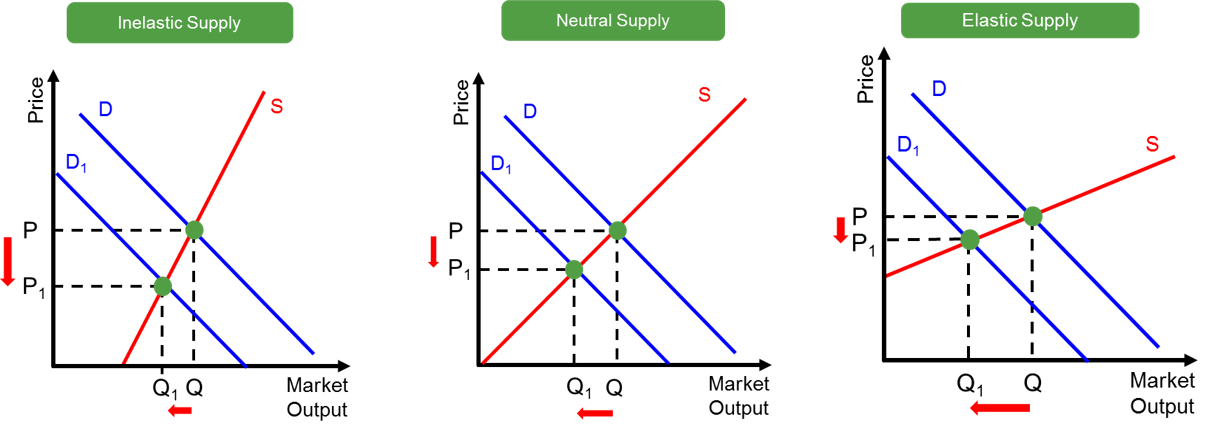An elasticity measure to measure the responsiveness of the quantity supplied by firms to changes in prices. These measures can become very useful evaluative tools when structuring an exam answer. to a data response question. This is because the impact of demand and supply curve shifts on the market equilibrium will depend on the position and slope of the supply curves and that is determined by the elasticity values of the good.
To measure the elasticity of supply curves we use the Price elasticity of supply measure, as this provides intuitive analysis when evaluating the supply curve of a particular good. Using PES as an elasticity measure we can define a goods supply as having:
Elastic Supply
Inelastic Supply
Unit Elastic Supply
Perfectly Elastic Supply
Perfectly Inelastic Supply
PES is a particularly useful and effective concept when evaluating demand curve shifts, as the impact on price and quantity will depend on the elasticity of the supply curve for the good. For instance, if a supply curve is inelastic then when there is a demand curve shift it will exacerbate the impact on price, but the impact on quantity will be muted. This is because when firms face an inelastic supply curve they are unable to change supply in line with price changes in the traditional way. This may be down to a number of different factors which restrict firms ability to change output. Below is an example of how the elasticity of the supply curve impacts the changes in the economic variables following an inwards demand curve shift.

In this case, there is an inwards demand curve shift and this creates pressure for the price to fall to P1 as a result of excess supply. This is the case regardless of the elasticity of the supply curve. However, as is shown in the diagrams, the more inelastic the supply curve the greater the price fall in the market. The opposite process would occur if the demand curve outwardly shifts.
So this demonstrates that elasticity is a powerful evaluative tool when analysing changes in demand/supply curves and forms a crucial part in describing the chain of economic events that unfold in these types of markets.